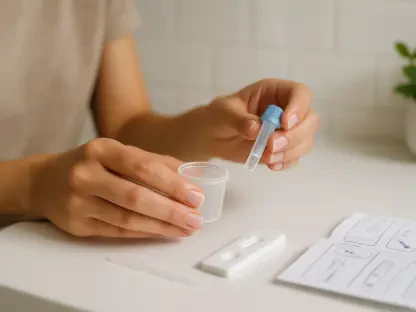As the global population ages, a silent crisis is looming on the horizon: Alzheimer’s disease, a condition affecting millions worldwide. What if a simple blood test could revolutionize the diagnosis of Alzheimer’s, making early detection more accessible and affordable? The potential of blood-based biomarkers to transform Alzheimer’s diagnosis is capturing both the imagination and the hopes of the medical community.
Understanding the Stakes: Why Early Detection Matters
Alzheimer’s disease places a massive burden on society, impacting families, healthcare systems, and economies. Traditional diagnostic methods, which often diagnose patients too late, fall short of addressing the growing incidence of this disease. The urgency of shifting toward early detection and intervention cannot be overstated, as delayed diagnosis not only limits treatment options but also significantly increases care costs, highlighting an urgent need for change.
Breaking Down Blood Biomarkers
In the quest for more efficient diagnostic tools, researchers have identified critical blood biomarkers like p-tau217, p-tau181, and Aβ42/40 ratios, as well as neurofilament light (NfL). Regions such as the U.S. and Europe lead in pushing these developments forward, yet other areas like Brazil are also making notable advances. For instance, clinical trials in Brazil have shown promising results in using these biomarkers for early detection—an innovation crucial to addressing widespread underdiagnosis in under-resourced settings.
Insights from the Experts
Renowned Alzheimer’s researcher Dr. Anna Garcia recently noted in an interview, “Blood biomarkers offer a dynamic opportunity to bridge the gap in Alzheimer’s diagnosis, particularly in places where traditional methods are inaccessible.” Published studies in authoritative journals such as Nature reveal substantial progress, demonstrating how clinicians notice dramatic improvements in diagnosis timelines and patient care outcomes. These advancements highlight the pivotal role of blood biomarkers in changing clinicians’ approach toward Alzheimer’s.
From Theory to Practice: Implementing Biomarkers
With the promise of these biomarkers, the next step is practical application within routine clinical settings. Healthcare providers are exploring innovative methods like dried blood spot tests and multiplex testing to simplify and expedite diagnosis processes. For countries with constrained resources, these methods present an affordable alternative, enabling broader access to early detection technologies, which until recently seemed out of reach.
Toward a Future Shaped by Early Detection
The development of blood biomarkers for Alzheimer’s has shifted from theory to transformative practice, inciting a global movement toward improved, accessible, and timely diagnosis. Continued support for research and validation efforts promises to expand their use, offering hope for enhanced patient outcomes. This journey emphasizes not only scientific innovation but also the necessity of global collaboration to tackle the challenges posed by Alzheimer’s, poised to revolutionize diagnostic paradigms for the better.









